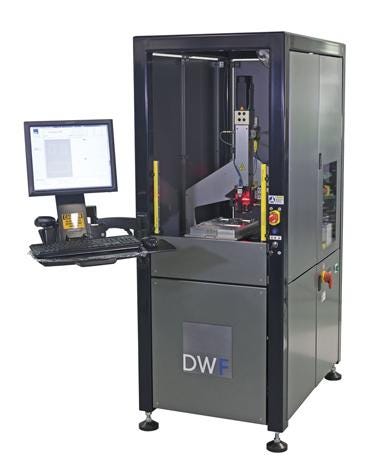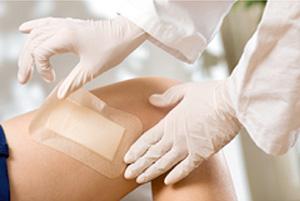February 28, 2014

At the MD&M West show and co-located events in Anaheim, Calif., such as ATX West, I saw lots of fastening systems and other assembly methods like adhesives on display. Four companies that stood out were PennEngineering, Bayer MaterialScience, NuSil Technology, and Fabrico Medical.
PennEngineering keeps coming up with clever fasteners to solve a wide range of design and manufacturing problems. The latest is no exception. The company introduced a new line of its microPEM pin fasteners as an alternative to micro-screws in compact electronic assemblies. They're designed for lighter-weight materials, including plastics. Last year, I saw them holding together the very small, familiar-looking metallic keyboard of a very large laptop maker who had to remain nameless. This year, the new line is aimed entirely at fastening non-ductile materials, Jay McKenna, PennEngineering's global business manager for microPEM fasteners, told Design News. Besides plastics, this includes magnesium and aluminum laptop and tablet casings.
The idea behind the new microPEM TackSert pin is to eliminate threaded hardware in small, compact electronics. This will become increasingly important as electronics get smaller, such as credit card readers and SIM card ejectors, or the growing class of wearables, especially disposables, McKenna told us. The pins permanently attach together two panels, or a top panel and a chassis. Top panels can be of any material as thin as 0.2 mm, and the base panels or chassis are those made of either plastics like ABS, or common magnesium die-cast materials. The pins have a diagonal knurl on top. Pressing the pin into the top panel and squeezing it with enough force makes its broach into the bottom panel or chassis, which holds the two together. No heat or ultrasonics are needed, only a punch and anvil. Installation can also be done automatically with the M1500 system from DWFritz.

Bayer MaterialScience introduced a new adhesive available in the US that is based on the company's Baymedix A polyurethane raw material. The raw material has been used successfully in other countries in dressings for wound care for several years, Bruce Fine, Bayer MaterialScience's market segment leader for medical and consumer products, told us. The adhesive is designed to be kinder to the skin. It's more breathable than silicone adhesives, and features comparable gentle removal and adjustable adhesive strengths, as well as hydroselectivity, to silicones, he told us.
The new adhesive is aimed at devices used in wound care and biosensor applications that must adhere to the skin. It is compatible with multiple types of sterilization technologies and processes. The company sells a range of materials for treating wounds that are made of polyurethanes, including tunable adhesives such as this one, along with foams and protective films. Also on display were an aliphatic polyurethane foam with high absorption rates and fluid retention that's based on the company's Baymedix FP reactive foam technology, as well as breathable, highly flexible thermoplastic polyurethane films that control water vapor transmission.

Of course, the silicone adhesive makers had their own story to tell. I visited Nusil Technology, which makes silicone medical materials, including adhesives, in both raw materials and formulations. The company's marketing & sales director for medical implants, Brian Reilly, showed me its newest product, MED-2310. The two-part silicone foam cures at room temperature using a platinum curing system. It's lightweight and flexible for use in implants of greater than 29 days (unrestricted), as well as wound care. The foam can also be used for dampening shock or vibration, and can be manufactured in either sheet or ribbon form. NuSil also makes a variety of other restricted and unrestricted materials.
Fabrico doesn't make adhesives and other flexible materials -- it provides materials converting services for a number of different application areas. It also helps test and recommend materials, conversion processes, and assembly methods for OEMs and contract manufacturers. Medical applications have grown so much recently that the company opened a new division last June, Fabrico Medical, dedicated specifically to them, Craig McClenachan, sales & marketing manager, told us.
The launch of Fabrico Medical was partly the result of the company's purchase of Light Fabrications, said McClenachan. Other acquisitions include Trient Technologies and Tekra, which were co-exhibiting with Fabrico Medical. In January, the new division began offering 3M's low-trauma, soft silicone adhesives for very fragile skin, such as that of babies and the elderly. Aside from wound care materials conversion, the division also works with medical-grade bonding adhesives and films for devices and diagnostic equipment, FDA-compliant pouches and packages, and disposable surgical materials.
Related posts:
About the Author(s)
You May Also Like



